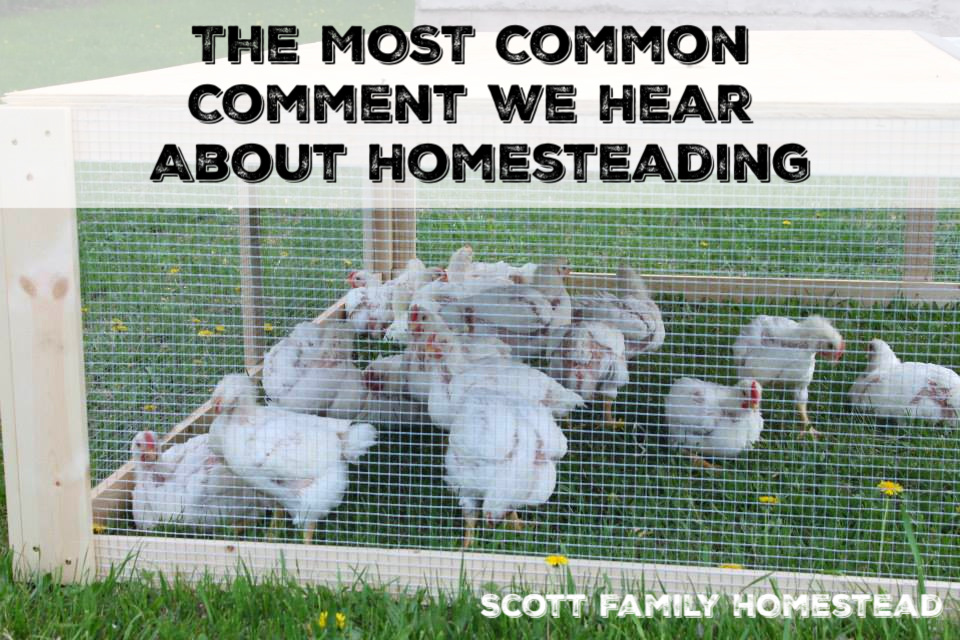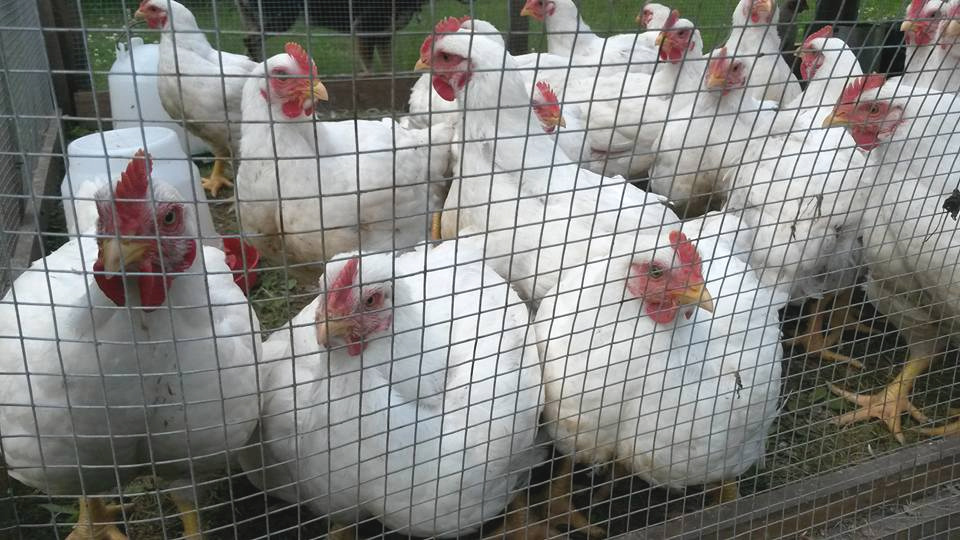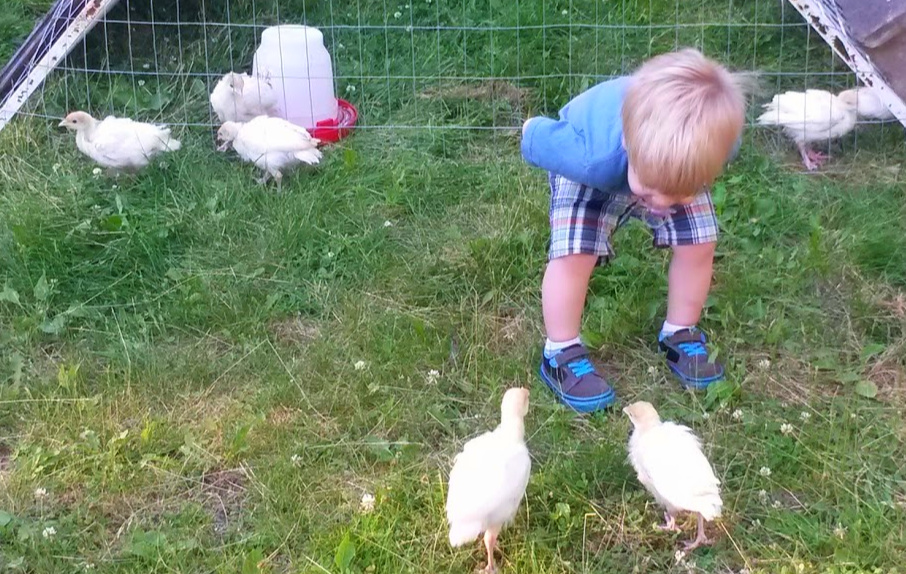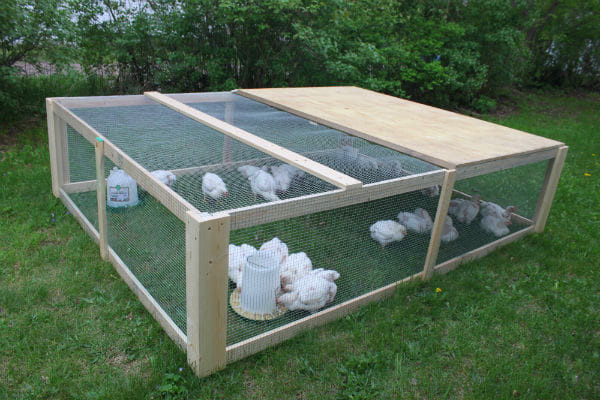7 years ago, we had our hearts set on raising chickens. We lived on a small lot in town and we weren’t sure how it would go. We researched everything from brooders, to feed, to medical care, and everything in between. We were nervous about the commitment and instead decided to raise 25 birds for meat. We could get a feel for brooding and raising chicks without the long term commitment. This was just what we needed to be sure we were ready to raise chickens, and it actually started our entire homesteading journey. BUT…we constantly heard (and still hear), “I could never eat an animal I raised.”

Yes, we eat animals we have raised as babies. Our chicks are 2 days old when we get them and the kids hold them and love on them. We talk to them, and sometimes we even name them. It has created a sense of responsibility to honor the animals that are sacrificed to feed our family. We do our best to give them good lives and even the kids have grown a respect for the meat we eat. We don’t waste these animals and we use every part that we can. The same would go for raising pigs, which we hope to grow in the future.
The truth is, even if you haven’t seen the face of the animal you are eating, it still had a face and a life. You can’t change the fact that a chicken is a chicken. In reality, the meat industry isn’t always so kind. Most people would be surprised of the conditions animals face in factory farming. A report from CAST (Council for Agricultural Science and Technology) states that broilers raised commercially should be kept in spaces that provide as little as 0.7 square feet per bird and turkeys grow best in about 3 square feet of space. If the birds have space to move around, the meat isn’t as tender. So, unless you are sourcing your meat from sustainable and ethical farms, you are supporting this industry.

We are not perfect. I buy meat from the grocery store, and most of the time I’m looking for the cheapest stuff I can get. I have supported the factory farming industry and I have voted with my dollars. We don’t have any interest in becoming vegetarians or vegans. I completely understand and support that choice, and would even support it for my children if that is what they choose. However, we like meat and animal products and believe it provides an important part of our diet. For us, the next best thing is raising and hunting as much of our own meat as possible, collecting eggs, giving these animals happy lives, and teaching our kids where their food comes from. As we discover more about conventional farming, we feel the push further into homesteading. We are researching pigs and hope to raise them in 2021 once we have the necessary means to do so. Until then, I hope to become more intentional about our meat purchases and sources.

Raising animals takes a lot of work, and isn’t necessarily any cheaper than shopping at the grocery store. It isn’t easy, takes a time commitment, and ties you to the homestead. Butchering these animals, or even dropping them off at a butcher shop, is not fun. It is hard. It is messy. It is bittersweet. We go into this with the mindset that death will be their fate. We treat them to fresh grass and chicken treats. We keep them clean and comfortable. However, every time someone says, “Oh, I could never do that!” it takes away from the hard work and sacrifice of both us and the animals.

I know this comment comes out because people truly believe they could not eat an animal they raised, but if that is the truth, it’s time to rethink eating meat. It is time to acknowledge what you are eating and decide what you are comfortable with. Many people don’t have the means to grow their own food or buy only expensive, organic, grass raised animal products, and I understand that. You can still make a difference.
- Start by researching locally grown meat. You might be surprised what is available nearby. If you buy a 1/4 cow or 1/2 cow, the discount of buying in bulk can help the budget. The carbon footprint of locally grown meat is smaller as well, because transportation is reduced.
- Shop at a reputable butcher or even order through the mail. Subscription boxes are becoming popular now, so there are many options.
- Plan at least one meatless day a week to reduce your meat consumption.
- Only buy as much as you need and don’t waste the meat you have purchased. Meal planning can help you use what you have so you aren’t throwing away expired products or leftovers.
We really aren’t offended when someone makes this comment, and I’m not looking for a debate, but I did think that acknowledging our reasons for raising our food might bring some clarity to those who don’t understand. We feel the call to a simpler, more intentional life and this is just a part of that. Whatever you chose, don’t forget to thank a farmer.

